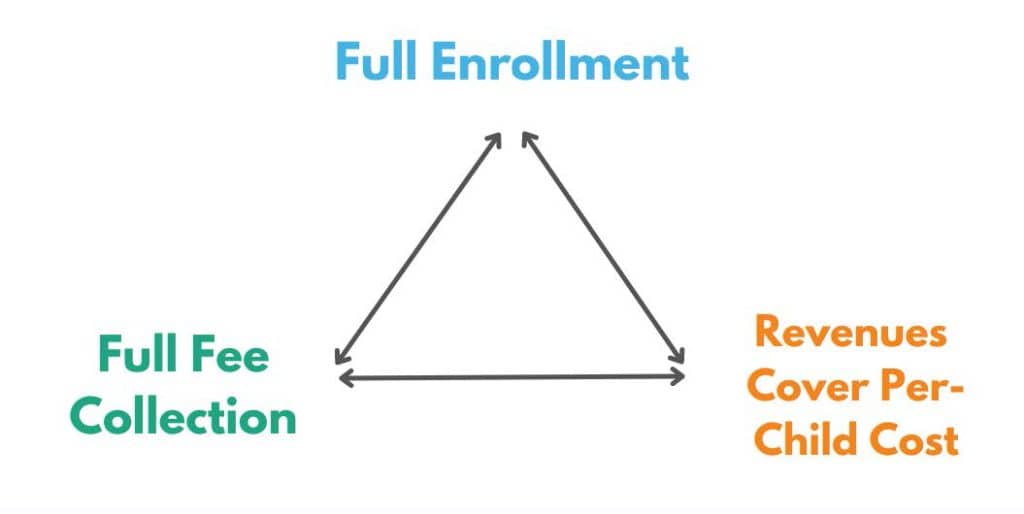Home ▸ Resources ▸ Existing Provider Resources ▸ Existing Provider Financial
Show me the money! Financial resources are crucial for the success and sustainability of any child care business. Child care providers need to have a solid understanding of financial management principles in order to ensure that their business is profitable and can continue to provide high-quality care for children and families.
In order to have a balanced budget, you must look at both money coming in and money going out. Your rates, both the price charged to families and what you receive from Best Beginnings Subsidy, must be looked at, along with enrollment and fee collection. These three factors form the “iron triangle” of early care and education (ECE) finance. Paying close attention to the three sides of the iron triangle is key to stable budgetary management.

Most programs rely solely on tuition fees that are collected for each enrolled child. Full enrollment is a cornerstone of ECE finance, regardless of whether you rely mostly on subsidy payments or private family tuition or a combination of both.
While some experts suggest that a well-run child care center can operate at 95% enrollment*; many experts suggest budgeting at a more achievable rate, such as 85% enrollment. Regardless of the target, any time enrollment drops below the budgeted target an ECE business loses money.
Timely and full collection of fees is essential to a successful and sustainable business. It is crucial to have strong policies and procedures that are followed in order to ensure that fee collection does not become a burdensome process. Consider setting up automatic transfer of funds from a bank account, debit or credit card to strengthen fee collection.
In order to ensure your child care business is not losing money, you must determine your actual cost per child and ensure that the rates being charged cover the cost per child. If the rate you are charging or receiving from Best Beginnings Subsidy are not covering costs and you do not feel you can raise rates, you must consider third party funding (donations, etc.) to fill that gap and ensure stable fiscal management.
Both your enrollment and fee collection impact the actual per-child costs. If your program is not fully enrolled, then the cost per child increases. If fees aren’t fully collected (bad debt), the cost per child increases.
“The iron triangle is a simple formula for a complex issue. It can be a helpful way to stay on track, to remember what’s important, but should not replace the many steps involved in sound fiscal management.” Louise Stoney, October 2010
*Morgan, Gwen G. and Bess R. Emanuel, The Bottom Line for Children’s Programs: What You Need to Know to Manage the Money, 5th edition, Watertown MA: Steam Press, 2010. Distributed by Exchange Press and Gryphon House.
Here you’ll find resources that will help build a solid foundation for your business, including giving you the basics of child care in Montana and help you jump-start your way to success!
Operations covers a lot in business, these resources can include information on program structure, policies and procedures, improving business practices, and more.
This section provides valuable information and tools for child care providers looking to promote their business and attract new families.
Child care providers need to have a solid understanding of financial management principles in order to ensure that their business is profitable and can continue to provide high-quality care.
This project is funded in whole or in part under a contract with the Montana Department of Public Health and Human Services. The statements herein do not necessarily reflect the opinion of the Department.